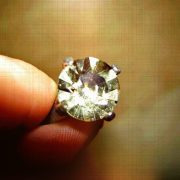No Sweat: Solving Crimes and a Sweaty James Brown
I’ve played in a number of bands over the years and each had it’s own particular flavor, or style of music. I played trumpet in a jazz band, guitar in several rock bands, drums in both rock and church groups, and I played bass in rock, raggae, and groups with a heavy leaning toward soul, like bands who covered groups such as The Temptations, Sly and the Family Stone, A Taste of Honey (I loved thumping out the bass line in “Boogie Oogie, Oogie”), and Harold Melvin and the Blue Notes.
But it was James Brown, another superstar musician, who came to mind when I selected the topic for today’s article and this was so because of two points. One: during his action-packed performances this iconic man of soul perspired heavily, spewing liquid like a human lawn sprinkler. Two: sweat is the focus of this post.
In a Cold Sweat
“When you kiss me
And ya miss me
You hold me tight
Make everything all right
I break out – in a cold sweat.” ~ James Brown, Cold Sweat
Actually, Brown plays no role in this piece, but the mention of his appearance on stage brings about an excellent mental picture that ties in with sweating, so off we go …
As you know, our skin is our body’s largest organ. It’s also the fastest growing. Skin is our own personal gift-wrapping, a covering that protects our “insides” and it prevents our important “stuff” from leaking out onto our furniture, floors, and city streets.
Skin is amazing; it’s made up of three layers, and it’s complicated. A lot goes on in and on our skin, such as temperature regulation and a part of that is due to the constant contraction and dilation of the blood vessels that live near the skin’s surface. This expanding and contraction controls how we transfer heat from our bodies.
Also aiding in temperature control is sweat.
Singer James Brown’s sweaty performances weren’t part of his act. Instead, his body produced sweat to help cool him as gyrated and crooned while under all those hot stage lights. Yes, Brown’s 650 sweat glands per square inch (that’s how many we each have) remained in constant overdrive when he and his band were in front of frenzied audience.
No Sweat
The familiar phrase “No Sweat” means simply that a task is easy, and it’s possible that we could hear its humble use, for example, when a case is wrapped up and a killer is behind bars.
Reporter: “Wow, you caught that killer quickly. How’d you do it?”
Detective: “No sweat.”
However, based on new crime-solving technology, “No Sweat” could indicate the possibility that a crime goes unsolved. This is where James Brown and his perspiration enter the equation.
Picture James Brown walking through a hotel lobby after one of his sweaty performances. Gravity pulled those droplets of perspiration downward. Some, of course, were absorbed into the material of his clothing but others fell to the floor, on furniture, and they transferred to anything he touched, including telephone receivers, and ink pens when signing autographs, etc.
The same is true for eothers who touches an object. Everyone leaves behind very small, invisible traces of perspiration. And, like us, bad guys are also human with human skin that is also comprised of 650 sweat glands per square inch. And they, too, leave behind those invisible specs of perspiration.
With that in mind, scientists have developed a means of analyzing deposited perspiration, with results that provide insight as to the number of people who were present at crime scenes. And, they’re able to produce those results in real time while on those scenes.
According to Jan Halámek, an assistant professor of Chemistry at the University at Albany, each of our skin secretions are different and, therefore, unique to us. Meaning that your sweat is different than the sweat produced by the sweat glands of Jeffrey Dahmer (thank goodness).
The makeup of our sweat is so distinct that it is as unique as our fingerprints. So unique that the chances of two people having the same levels of lactate, urea, and glutamate, the three metabolites examined, is, well, essentially zero.
For now, though, investigators will have to settle for knowing only the number of people who visited a crime scene, but not their names. This is so because the levels of metabolites in humans vary with exercise and/or diet. The same is true when a person is ill.
Someday, though, someone will start a sweat database much like fingerprint and DNA databases, but with instant results. Yes, in the near future, it’s possible that a detective walks into a crime scene, holds a SweatDetector 2000 to a doorknob, and within seconds the killer’s name, address, and shoe size pops up on a handheld monitor.
And, if a case goes unsolved we’ll most likely see a phrase used to mean the opposite of what it does today, such as when a detective responds to the reporter’s question, “Why couldn’t you solve the case, Investigator?”
Her reply … “No sweat.”







